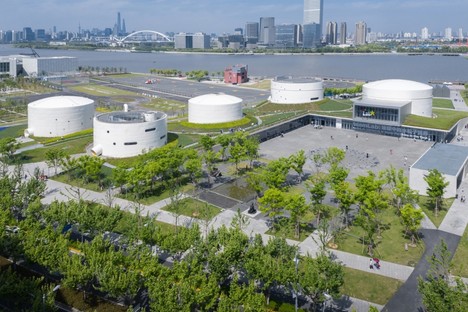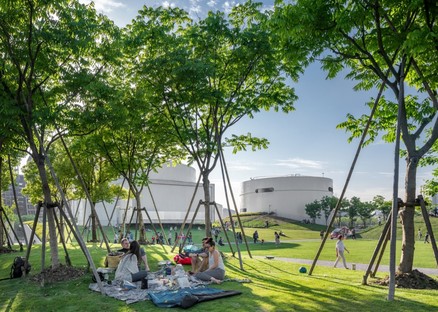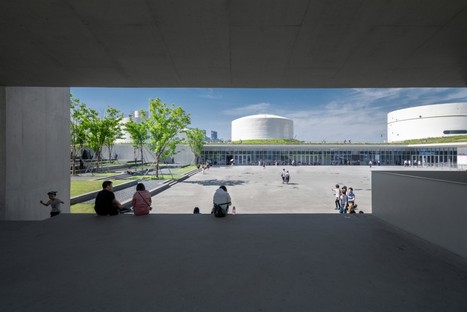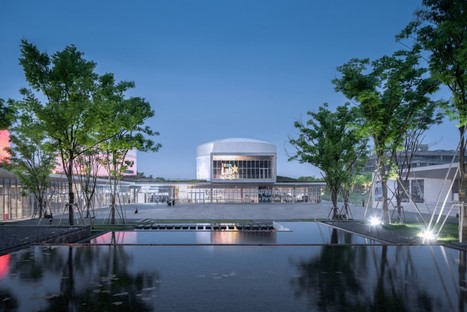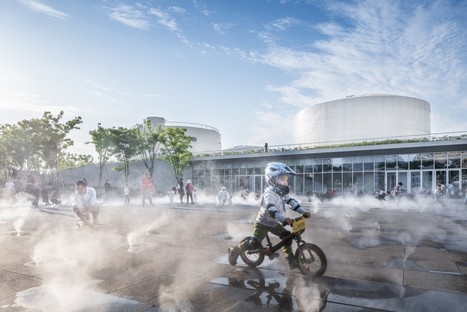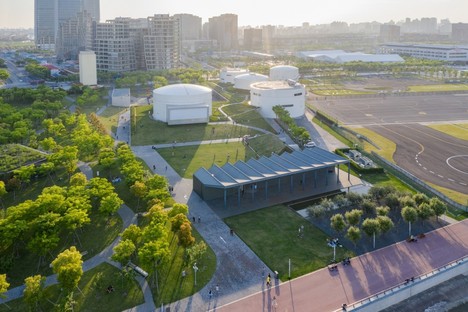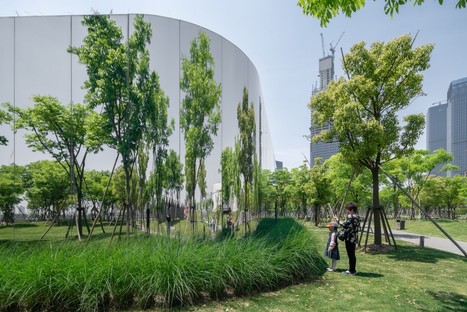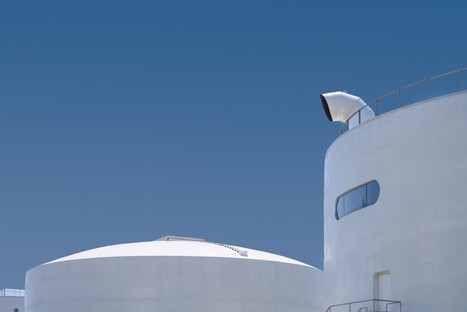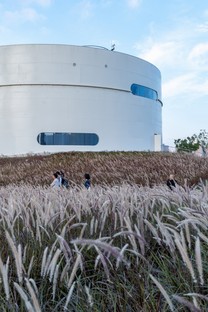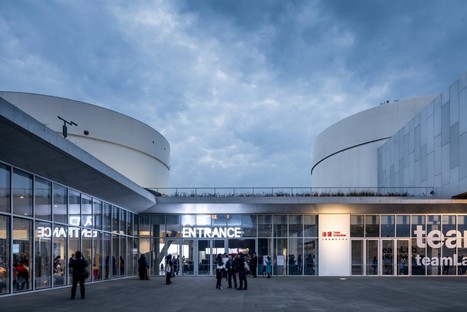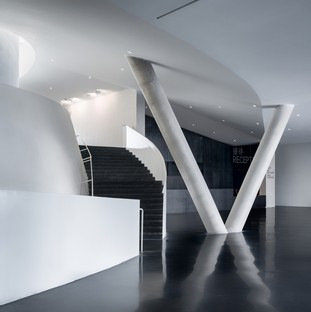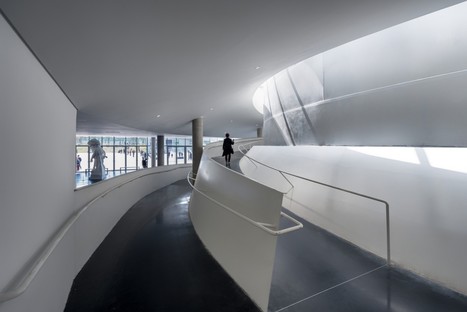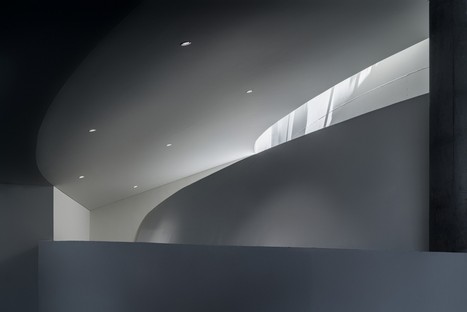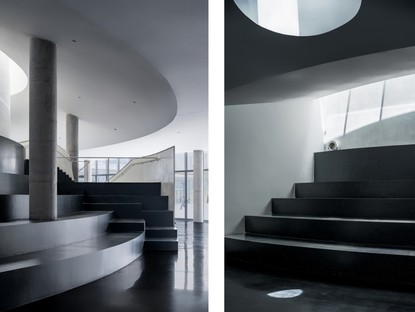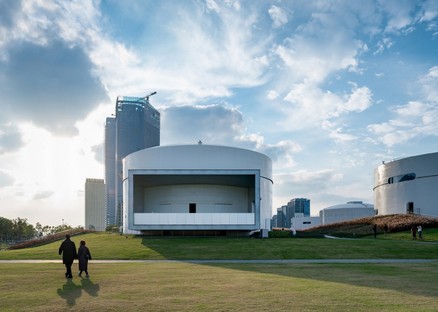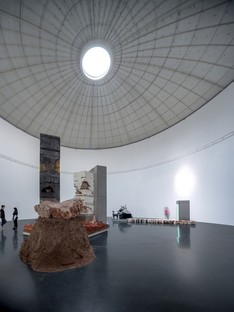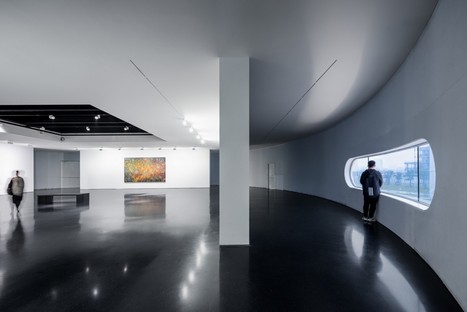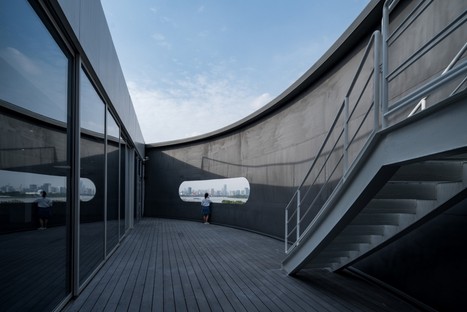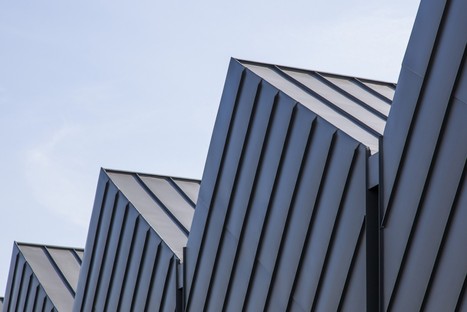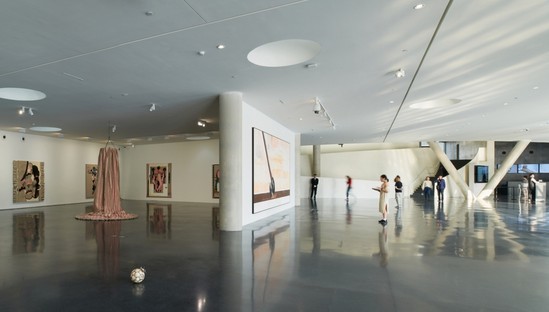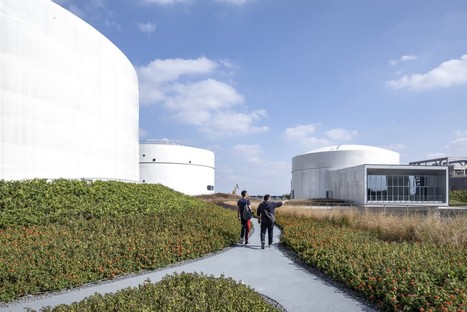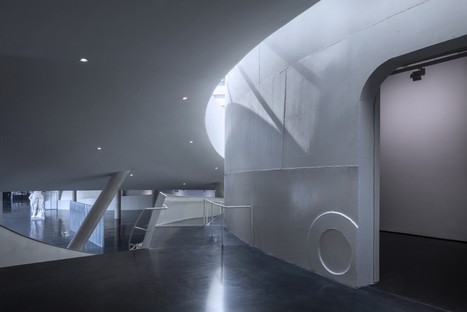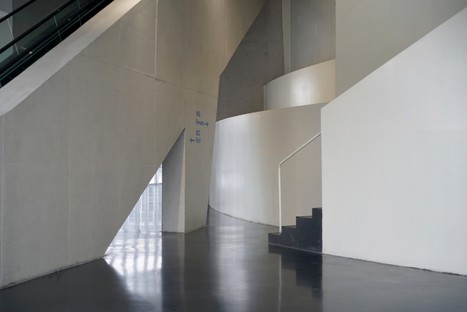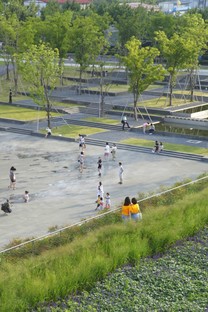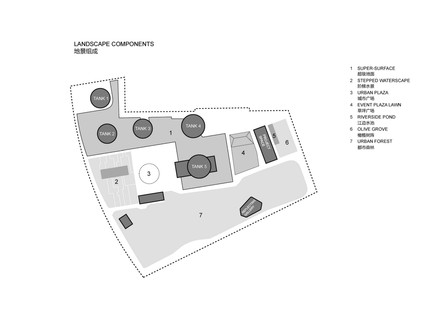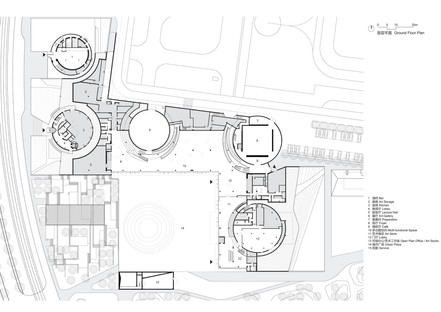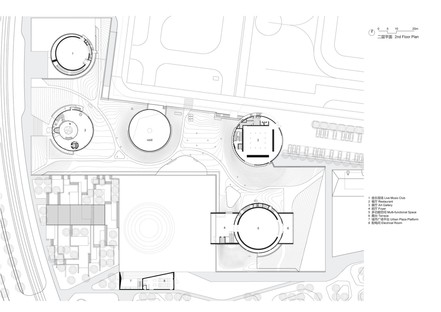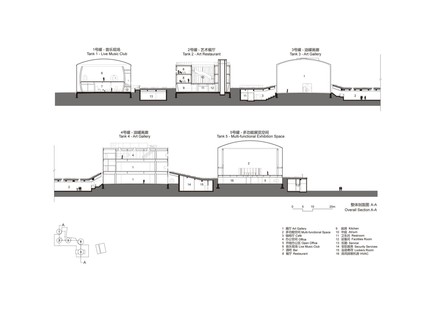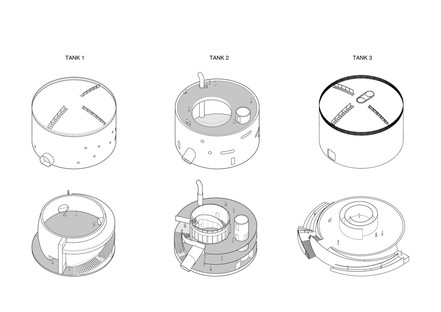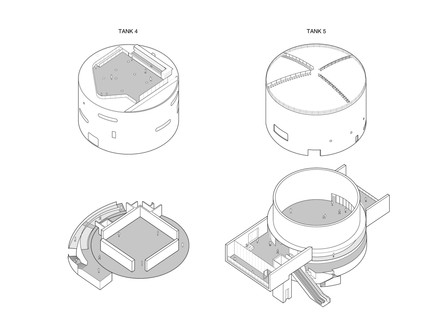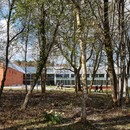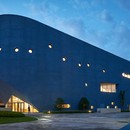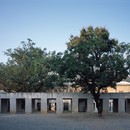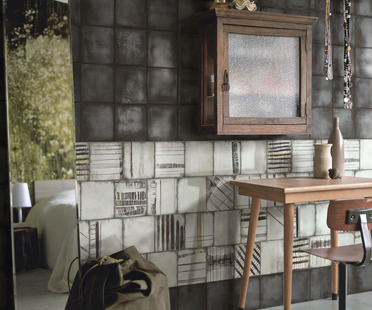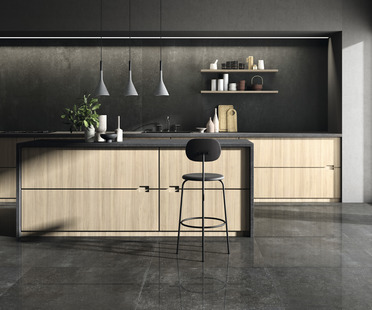10-04-2020
OPEN Architecture: Tank Shanghai Art Centre
Tian Fangfang, Wu Qingshan, Chen Hao, JJY Photo, INSAW Image,
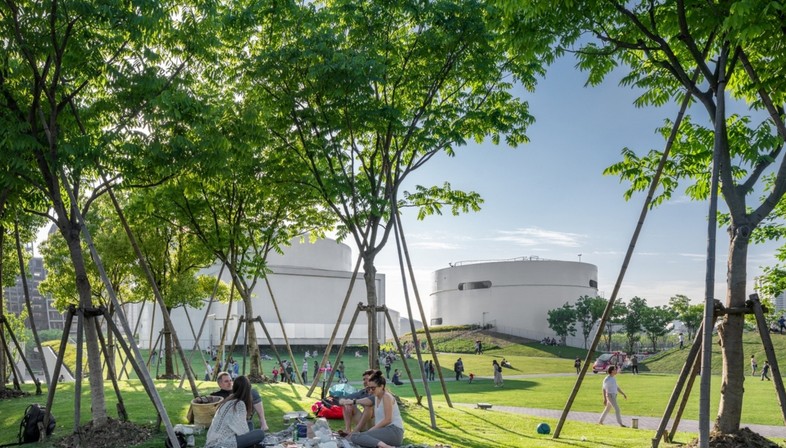
When the nightmare of the Covid-19 pandemic is finally behind us, the people of Shanghai will once again be able to enjoy an extraordinary urban experiment: the TANK Shanghai Art Centre, designed by Beijing-based firm OPEN Architecture, which combines the themes of art, the landscape, and reclamation of the past. After 6 years of work, from the initial design to the completion of construction, in March 2019 a cultural centre was finally opened, spanning around 10,000 square metres spread across an area of over 60,000m2 which is an integral part of it. This is the latest project from well-known art collector Qiao Zhibing who began his activity of collection and patronage in 2006 and who is now considered one of the world’s greatest collectors of works by Chinese and international artists alike. Having already founded Qiao Space, his private art gallery in the West Bund in Shanghai, he was passionate about establishing the new TANK Shanghai centre with the goal of “encouraging connections between the public, contemporary art, city life and nature”.
With the support of the Chinese government, the West Bund in Shanghai became the location for the transformation of an industrial area of around 9.4 square kilometres along the Huangpu River, in the southeastern part of the Xuhui District, as an urban hub, a space for the enhancement of public life, and a “museum avenue”, as it is often called. The latest addition to the development populating this new Chinese ‘Rive Gauche’, based on a network of cooperation involving Long Museum, Yuz Museum, Start Museum and the Centre Georges-Pompidou X West Bund - which has a new location designed by David Chipperfield - is TANK Shanghai, whose museum and exhibition design is certainly nothing short of exceptional.
The works involved converting what were once large fuel reserve tanks from Longhua Airport into a cultural centre with an art gallery, bookshops, cafés and restaurants, all ensconced in the setting of an urban park.
Each of the 5 tanks has had a different programme and exhibition strategy chosen for it and, inside them, a range of different spaces have been set up to house art in all its forms. Tank 1, spread across two levels, features a live music club upstairs and a bar downstairs, with curved walls to optimise the acoustics during concerts. A restaurant has been set up in Tank 2 with a large, circular central atrium, whilst a roof terrace also allows diners the option of enjoying a meal in the open air. These two spaces have direct access to ground level, by way of ramps that are covered with the same white metal panels used now used to cover the tanks. The other three spaces are partly aboveground and partly underground, with access from the last multifunctional lobby, with a café and a museum shop located underneath a large green area, the urban park. Inside Tank 3, an access ramp has been built following the perimeter of the tank, but the original interiors have been cleaned and restored in order to show off their intriguing industrial look, making it into an exhibition space for large works of art and contemporary installations. At the peak of its dome, an open skylight has been added so as to allow direct light (and rain) to enter, making for a highly dramatic effect. In Tank 4, a square space has been marked out across three floors which houses galleries for paintings and sculptures, and finally, Tank 5 features two projecting rectangular volumes which act as large stages for open-air performances.
Aside from how extraordinary the exhibition project is, having managed to preserve the industrial aspect of the place by creating a fascinating fusion between containers and artistic content, the design shows that great attention has been paid to the landscape element of it, which transforms the architecture into nature and vice versa. What OPEN calls the Super-surface is a five-hectare Z-shaped strip of green land which crosses the cultural site from tip to tip: guiding the visitors through the exhibition and performance spaces up to the riverside, the park is now an accessible location, unlike in the past, with no more barriers or obstacles for those wishing to contemplate the natural beauty of the setting. Multiple paths leading visitors through nature allow for a new way of using the public space, a sort of blend between an urban experience and outdoor life: a staircase leads down to a paved square equipped with hidden misting devices which create a refreshing mist in the summer. Whilst to the south, there is an urban forest of trees and local plants, in the east, a second grassy square has been designed for events such as open-air music festivals.
Tank Shanghai is an architecture with multiple meanings. It is a place of artistic immersion that lies at once in the heart of the metropolis and in a vast park full of lush plant life, peppered with works of art. It brings together a series of spaces for contemporary art, showcasing the traces of this country’s past (Longhua was China’s first international airport, built in 1917). It represents a complete overhaul of the city experience and the use of an industrial site on the riverfront: it has a noticeably alienating effect on visitors who can access brand-new large space, once silent presences far from the human scale. One could say that the Tanks are an artistic installation in their own right, not ephemeral but permanent. Outside of these, the project catapults visitors into an environment which is entirely the opposite, one which has never existed before: a space evocative of country life, with paths and grassy areas where people can meet and play sports together, as per the traditional concept of large urban parks. A site with no borders or boundaries, as designed by the architects of OPEN, but also with no definitions.
This unusually open approach to museum space has already brought unexpected benefits and inspired new operating models for art centres. In the course of a year, Tank Shanghai has played host to not just incredibly high-level exhibitions, but also a fashion week, a book fair, an art festival and a conference on artificial intelligence, introducing new types of audiences into spaces that are traditionally seldom frequented by the general public.
Mara Corradi
Architectural and Interior Design: OPEN Architecture
Partners-in-Charge: LI Hu, HUANG Wenjing
Project Team: YE Qing, LUO Ren, Victor QUIROS, ZHOU Tingting, CHEN Xiuyuan, LI Zhentao, ZHAO Yao, LU Di, JIA Han, ZHANG Yiwen, Steven SHI, ZHOU Xiaochen, HUANG Zhonghan, Laurence CHAN, Cynthia Yurou CUI, YANG Qi, GE Can, GAO Qi, Stephanie LEE, JIN Boan, ZHANG Hao, WANG Mangyuan, YAN Dihua, ZHANG Chang, Tomas KOWALSKY, JIANG Simin
Local Design Institute: Tongji Architectural Design Group
LDI Team: SUN Xiaolan, ZHANG Xinpei, SHE Xiang (Architecture); YU Jinxin, YU Fayang (Structure); TANG Zhenzhong, WU Pan, SUN Xiaofeng, ZHOU Dong (MEP)
Landscape Design: OPEN Architecture + Beijing EDSA Orient Planning & Landscape Architecture Co., Ltd.
Lighting Consultant: Shanghai Ming Chi Architecture and Engineering Co., Ltd.
Design Year: 2013-2019
Client: Shanghai West Bund Development Group + Tank Shanghai
Program: Art Galleries, Event Spaces, Restaurant, Café, Live Music Club, Museum Offices and Art Storage
Building Area: 10,845 sqm
Site Area: 47,448 sqm
Location: 2380 Longteng Avenue, Xuhui District, Shanghai
Photos by: (01-08) © INSAW Image,(22-23) TIAN Fangfang, (09-19) WU Qingshan, (24-25) OPEN Architecture, (21) CHEN Hao, (20) JJY Photo
http://openarch.com/










